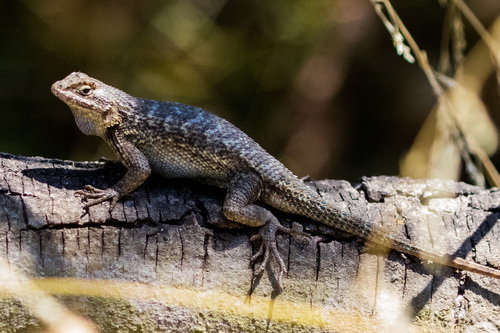
Western Fence Lizard
The Western Fence Lizard (Sceloporus occidentalis), with its striking blue belly, thrives in diverse U.S. habitats. Notable for sun basking and tail shedding to evade predators, it plays a vital ecological role by controlling insect populations.
5-7 years
Lifespan
28.3495 g
Weight
Length: 11 - 21 cm; Height: 3 cm
Size
Brown, Grey, Yellow, Blue, Black
Color
1.5-2 years
Age of Sexual Maturity
Least Concern
Conservation Status
Stable
Population Trend
Distribution Range of the Western Fence Lizard
Sceloporus occidentalis, known as the Western Fence Lizard, is native to the western United States. Its geographical distribution includes states such as California, Oregon, Nevada, and Utah, as well as parts of Idaho, Washington, and Arizona. The species can also be found in Baja California in Mexico.
Western Fence Lizard's Habitat
Environmental Conditions
The Western Fence Lizard inhabits environments that range from forested regions to grasslands and shrublands. It is commonly found in areas with ample sunlight, such as in rocky outcrops, open woods, and grassy fields. The climate in these areas varies from temperate to arid, with the species adapting to seasonal temperature changes.
Ecological Niche
Sceloporus occidentalis occupies the ecological niche of a diurnal ground-dwelling insectivore. It primarily feeds on insects and arthropods and plays a role in controlling pest populations. The species is also known for its distinctive behavior of basking in sunlight to regulate its body temperature, which is a common trait among reptiles.
Copyright @ Nature Style Limited. All Rights Reserved.
 English
English